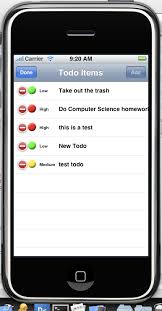Are you a cubicle dweller by day? Here's an article by Jack Wallen about keeping your sanity while doing so:
"So you work in a cube farm, and every day you spend there sucks more and more of your sanity away. You're pretty sure that any day now you will be taken off in a straightjacket to work in your new padded cell. How can you avoid this? How can you hang on to a semblance of sanity when day in and day out, you spend eight hours sitting in the center of three industrial walls? It's not as hard as you might think. Here are some suggestions to help you preserve your sanity.1: Change it up
When your surroundings do not change, the best way to keep your cool is to change them yourself. A friend of mine has been in the same cube farm for nearly 10 years. During that time, she has made a point to randomly change the decorations in her cubicle. But she doesn’t just add a photo here and a knick-knack there. My chum is a serious Trekkie and makes a point to focus on one character (or race of characters) at a time. So one month will be Cardassian month and the next will be all about Dr. Bashir or Jean-Luc Picard. Not only has this helped her sanity, it has given her quite the reputation around the company and provided plenty to chat about.
2: Take breaklets
Most people work like this:
- Work four hours
- Take a lunch break
- Work four hours
This works for a while, but eventually it will catch up with you. Instead of sticking only to this schedule, you should mix it up. If your company allows it, split your break up into smaller breaks throughout the day. Or better yet, just randomly get up and take a stroll around the company. If you have to, grab a folder or a handful of papers and make like you’re heading for the printer. Just get up and get out of that cubicle throughout the day. Taking strolls around the company won’t just get you out of your cubicle; it will give you a bit of exercise you desperately need. If you’re feeling really daring, skip the elevator and hit the stairs!
3: Crank up the tunes
Music is the food of life. But you will be best served (as will your fellow employees) if you keep that music to yourself. Back when I had an office at TechRepublic, I was notorious for cranking up techno very loud. It didn’t dawn on me that maybe it would have been better if I’d left the volume at a respectable level. And that was with an office — not a cubicle. When you are working in a cubicle, your best bet is headphones. I also recommend that you don’t just bring in your favorite CDs and listen to them over and over. You might as well stare at the same gray-brown walls and listen to the voices developing in your head. Instead, point your PC to a nice Internet radio station. If you use Linux, you may want to open up Streamtuner, as I do, and take in a whole world of music.
4: Turn to Facebook/Youtube/Twitter
I know, it sounds horrible — but I am advocating the use of social networking sites at work. However, I suggest you use them with moderation. Do not plant yourself on Facebook and stay there at the expense of your work. Instead, give yourself social breaks between tasks. Complete a task, update your status. Reconfigure that router, tweet! Or create a social networking site for your fellow workers. With this in place, your social networking will be work related. If you can’t create the site yourself, propose this to your IT staff.
5: Move your office
I don’t mean literally. But if you use a laptop, take it away from your cubicle and move to the break room or a meeting room. Do this once a week or so, and you’ll find that cubicle not nearly as life-stealing. Just make sure you are not breaking any company policies by doing so. And if the weather is nice enough (and your signal strength will reach) take that laptop outside for an al fresco workday. Just remember to have a full battery or an outlet nearby.
6: Socialize
We’ve all done it before — worked in places where we just… couldn’t… stand… the… people… we… worked… with. You can’t get along with everyone, but there should be someone you can at least form some sort of social bond with. Find someone who shares similar interests (like Star Trek, Linux, or mountain biking) so you will at least have SOMETHING to talk about (other than complaining about how you hate your fellow workers).
7: Do an anonymous act of kindness every day
This is all about karma. Do something good for a coworker every day. It doesn’t have to be big. You could pick up someone’s print job for them and deliver it to their cubicle (see number 2) or clean up an area around the office. Just make sure the act is random and anonymous. The anonymity will give you a certain pleasure as you watch others trying to figure out who did the deed.
8: Play hooky
Remember how good it made you feel back in college to skip a day of class? That feeling can be enough to get you through until the next vacation day. Find a special event or just a perfect day outdoors and call in sick. Yes, it can backfire on you if your boss takes a break and catches you playing Frisbee golf in the park. But then, if your boss catches you in the park, what exactly is he doing there?
9: Employ the Les Nessman cubicle strategy
Who can forget Les Nessman, the award-winning news director from WKRP? One of his many quirks was his belief that a news director should have his own office. Well, he didn’t — so he made do. Les lay down masking tape on the floor to create the outline of the walls of his “office.” He even included a “door” that he mimed opening and closing every time he entered or exited. So what is keeping you from going “Les” on your cubicle? Tape down that fourth wall, include a door, and insist that people “knock” and use the “door” when they need to meet with you.
10: Have a sense of humor
Humor will get you through just about every situation — including cube life. Become a practical jokester, laugh at silly mistakes, let everyone see that you can take just about anything that life throws at you. But as you’re laughing it up and plotting the demise-by-joke of your next victim, always remember your company policies. Make sure your master plan does not go against any company rules, or the HR department will have the last laugh. Above all, have fun, enjoy your workday, and make it more pleasant for everyone around you."
Several of these ideas can be used regardless of where you work. What do you do to maintain your sanity at work? Subscribers, click here to comment at the end of this original 1-2-3...Get Organized blog post.






















































